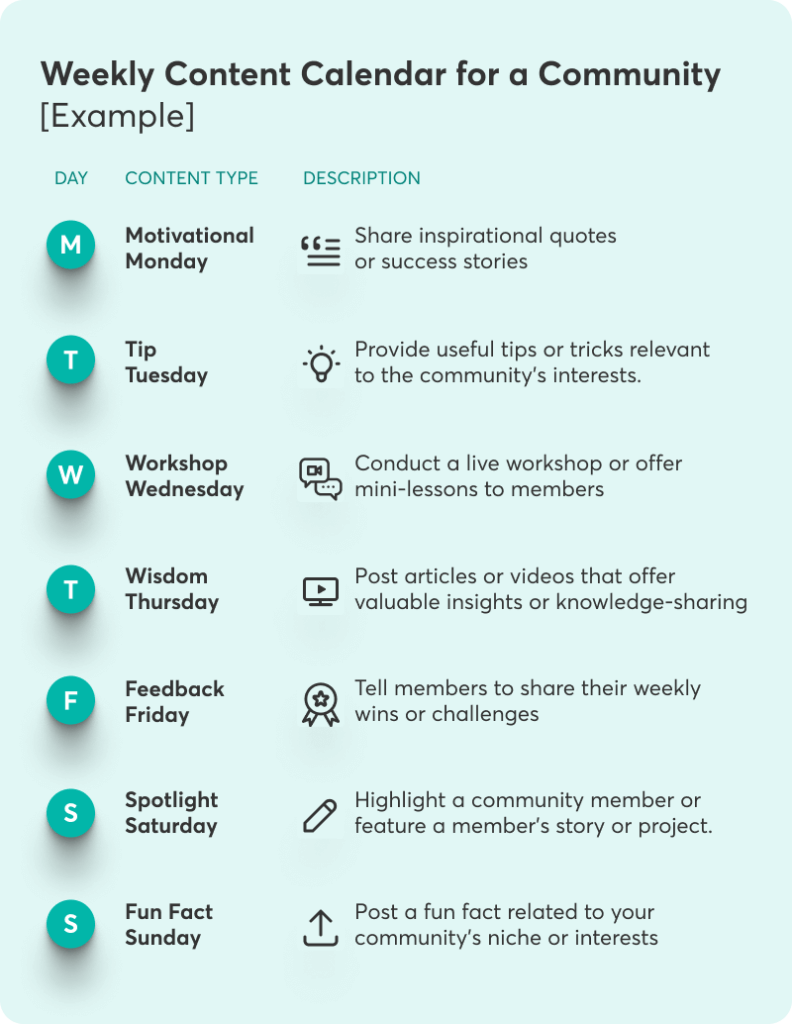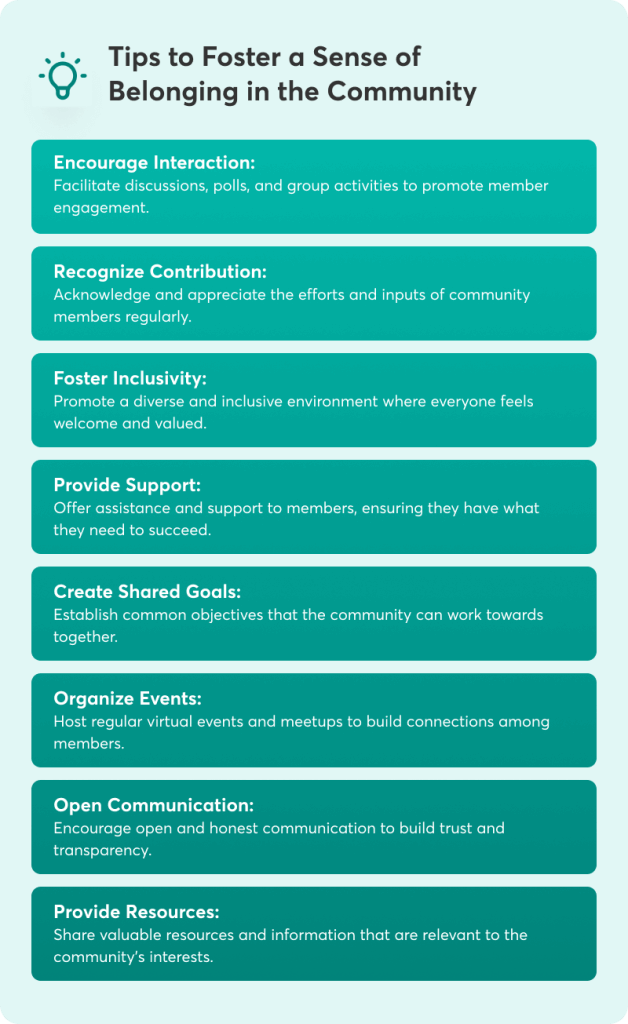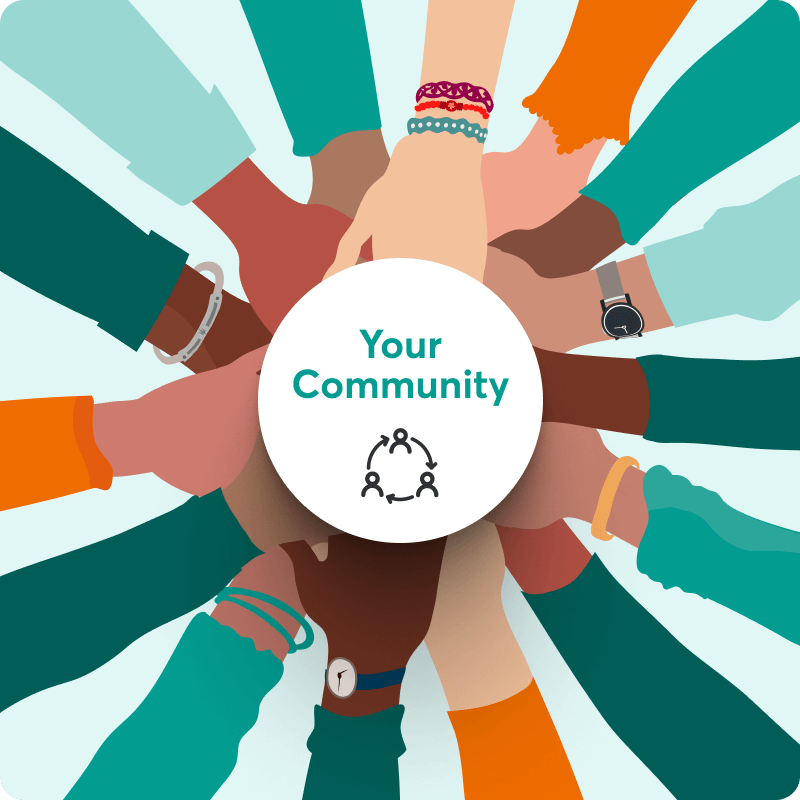10 Ways to Build a Community: A Complete Guide for Course Creators

Table of Contents
The success of an online course isn’t just about the content—it’s about the connections. Community building has become an essential part of the digital education landscape, and for good reason. A thriving community can transform your course from a one-time transaction into an ongoing, dynamic learning experience.
In this guide, we’ll share ten proven ways to build and nurture a community around your online courses. If you’re just starting out or looking to revitalize an existing community, these strategies will help you create a space where your learners can connect, engage, and grow together easily and quickly.
So, let’s dive in and explore how you can turn your course into a vibrant ecosystem of learning and collaboration.
1. Leverage Social Media Platforms
When it comes to community building, social media platforms are your secret weapon. They’re where your potential learners are already hanging out, making them perfect for extending your course’s reach and fostering connections.
Here’s how you can successfully use different platforms:
Facebook Groups:
Facebook Groups are incredibly effective for creating a sense of community. The familiar interface makes it easy for members to participate, and the ability to create private groups ensures a safe space for course-specific discussions.
LinkedIn:
For professional development courses, LinkedIn is the go-to platform. It’s great for sharing industry insights, hosting thoughtful discussions, and helping learners expand their professional networks.
Twitter (formerly known as X):
X’s fast-paced nature makes it perfect for quick updates, sharing bite-sized learning tips (tweets), and engaging in real-time conversations. If you already have a community on X, you can use hashtags related to your course topics to increase visibility and attract new community members.
TikTok:
Don’t underestimate the power of short-form video content. I’ve seen course creators use TikTok to share quick tips, behind-the-scenes glimpses, and even mini-lessons that drive interest in their full courses and communities.
To make the most of your efforts, you can also follow these best practices to engage your community members on social media:
💁🏻 Learn How to Promote Your Online Courses on Social Media
2. Choose the Right Community Platform
Selecting the right community platform is crucial for long-term success. While social media can be a great starting point, a dedicated community platform often provides more control and customization options.
There are different types of community platforms, but you should pick the one that suits your needs:
While searching for a platform, you also need to look into many different parameters to make your decision.
Here are some key factors to consider:
Features: Look for platforms that offer discussion forums, member profiles, content organization, and moderation tools.
Pricing: Consider your budget and the platform’s pricing structure. Some charge per member, while others have tiered plans.
Scalability: Ensure the platform can grow with your community.
Integration capabilities: Check if the platform integrates with your course delivery system and other tools you use.
On top of these, a mobile-friendly platform is non-negotiable. Your learners should be able to engage with the community easily from their smartphones or tablets via a mobile app. Personally, I always test the mobile experience thoroughly before committing to a platform.
3. Create Engaging Content
Content is the lifeblood of any thriving community. It’s what draws people in, keeps them engaged, and provides ongoing value.
To create engaging content for course communities, you can try the following:
Curate relevant content: Make it a point to regularly share articles, videos, and resources that complement your course material. This not only provides additional value to learners but also sparks discussions and keeps the community active between course modules.
Use templates for consistent posting: Maintain a steady flow of content using templates for different types of posts. For example:
This structure helps to stay organized and gives community members a sense of what to expect. Here’s an example of a weekly content calendar for your community:
Incorporate various content types: Offering a mix of content types keeps things interesting and caters to different learning preferences:
The goal here is to create content that encourages interaction and adds value to your learners’ experience beyond the core course material.
4. Foster a Sense of Belonging
Creating a sense of belonging is crucial for building a strong, engaged community. It’s what transforms a group of people into a cohesive unit with shared goals and experiences.
To do this, you will first need to create a welcoming environment in your community. First impressions matter, so put some extra effort into welcoming new members:
While your course topic is already a common interest (that’s why your members joined in the first place), try to dig deeper. Establish common interests by encouraging members to share their specific goals, challenges, and experiences related to the course material.
This helps create smaller sub-groups within the larger community where members can connect on a more personal level.
Last but not least, develop regular initiatives to maintain community engagement and strengthen community bonds.
A few ideas you can implement include:
Fostering a sense of belonging is an ongoing process. It requires consistent effort and genuine care for your community members, with every interaction serving a purpose. This approach ensures that all efforts are optimized, creating a self-reinforcing cycle where the sentiment of ‘I belong here’ within the members of the community grows stronger over time.
5. Implement Effective Moderation
A healthy, thriving community requires effective moderation as it ensures that your community remains a safe, respectful, and productive space for all members.
Inside this space, moderators are truly the unsung heroes of community building. They are the ones who enforce community guidelines, facilitate discussions and keep them on track, welcome new members, and help them navigate the community. They are the ones who also identify and address potential conflicts while recognizing and encouraging positive contributions.
Well-communicated community guidelines are also of huge help. They help to set expectations for behavior and provide a reference point for moderation decisions. These guidelines should be easily accessible to members and may cover:
You may also choose to use automation tools for moderation. While human moderators are irreplaceable, automation tools can significantly lighten the load.
These tools offer keyword filters to catch inappropriate content, spam detection algorithms, automated welcome messages for new members, and scheduled posts for regular community events or announcements.
The key is to find the right balance between automated and human moderation to maintain a personal touch while efficiently managing a growing community.
💁🏻 Read Effective Community Management: Best Practices for Success
6. Encourage Member Interaction
A community thrives on interaction. The more your members engage with each other, the stronger your community becomes. There are also a few things you can do to boost interaction:
Hosting regular chats or live events can create a sense of immediacy and shared experience:
These events not only provide value but also create opportunities for real-time interaction among members. If you are not yet up for a live event, however, creating discussion threads can also spark great and engaging conversations:
What’s important in this strategy is to seed these discussions with thought-provoking questions and actively participate in encouraging others to join in. Be careful, though; your role is to facilitate these interactions, not dominate them. You want to create an environment where members feel comfortable and excited to engage with each other.
7. Utilize Notifications Strategically
Notifications are a powerful tool for keeping your community engaged, but they’re a double-edged sword. Used wisely, they can drive engagement; used poorly, they can annoy members and lead to disengagement.
To keep members informed without overwhelming them, you need to find the right balance:
On top of this, ensure that members have granular control over their notification settings. Let them choose which types of activities trigger notifications. Allow them to set their frequency preferences (e.g., immediate, daily digest, weekly summary), mute notifications for specific threads or topics, or even set “do not disturb” hours.
To drive engagement, use notification triggers for responses to a member’s post or comment, mentions or tags, newly posted content that is relevant to a member’s interests, upcoming events or deadlines, and achievements or milestones reached.
Notifications are all about pulling members back into the community when there’s something valuable for them to see or do. Every notification should provide clear value to the recipient.
8. Develop an Advocacy Program
An advocacy program can take your community to the next level by empowering your most engaged members to become ambassadors for your course and community.
Here’s how you can build an advocacy program:
Remember, your advocates are not just promoters of your course or community – they’re valuable partners in your community’s growth and success. Treat them as such, and they’ll become your most powerful asset in community building.
9. Measure and Analyze Community Growth
To ensure your community-building efforts are paying off, it’s crucial to measure and analyze your community’s growth regularly.
Some key metrics to track are:
Most community platforms offer built-in analytics, but it’s also a good idea to use analytics tools like Google Analytics to monitor the website traffic to your community homepage and other pages related to it. Social media analytics tools for tracking engagement on those platforms can also be useful, along with a survey tool to help you gather qualitative feedback.
Keep in mind that data is only valuable if you act on it. As your community grows, you will need to adjust your strategies based on data insights:
While numbers are important, they don’t tell the whole story. Always combine quantitative data with qualitative feedback from your community members to get a complete picture of your community’s health and growth.
10. Integrate with External Tools and Platforms
Integrating your community with external tools and platforms can enhance functionality and provide added value to your members.
Some tools that you might find particularly useful and can streamline the process of managing your community are ChatGPT, X-Ways Forensics (XWF), and any other project management tools, scheduling tools, or webinar tools depending on your needs.
Use ChatGPT for content generation and support. With it, you can:
While it is a powerful tool, you will need to review and personalize its output to maintain an authentic voice.
💁🏻 Check these 10 Great Interactive Course Activities to Create With ChatGPT
You can also use X-Ways Forensics for specialized communities that are focused on digital forensics or cybersecurity:
Finally, consider integrating your platform with these handy tools:
What’s important is to choose integrations that genuinely enhance the community experience and align with your members’ needs and goals.
LearnWorlds offers market-leading integrations that seamlessly connect your favorite tools, enabling you to manage your community from one central platform efficiently. Whether it’s marketing, eCommerce, customer service, business automation, or payments, our platform integrates all aspects of your online business, allowing you to focus on what you do best.
Ready to Build an Online Community Around Your Courses?
Building a thriving community is a journey, not a destination. It requires consistent effort, genuine care for your members, and a willingness to adapt and evolve. By implementing these 10 strategies, you’re well on your way to creating a vibrant, engaged community that adds immense value to your course offerings.
Most importantly, always keep your learners at the heart of your community-building efforts. Listen to their needs, celebrate their successes, and create an environment where they can connect, learn, and grow together.
Building a community takes time and patience, but the rewards are immeasurable. Not only will you see improved course outcomes and increased student satisfaction, but you’ll also create a powerful ecosystem that can become a significant asset for your business.
So, are you ready to take your online course to the next level with a thriving community? The journey starts now, and we can’t wait to see the amazing communities you’ll build! Get started with LearnWorlds today.
Further reading you might find interesting:
Kyriaki is a Content Creator for the LearnWorlds team writing about marketing and e-learning, helping course creators on their journey to create, market, and sell their online courses. Equipped with a degree in Career Guidance, she has a strong background in education management and career success. In her free time, she gets crafty and musical.





